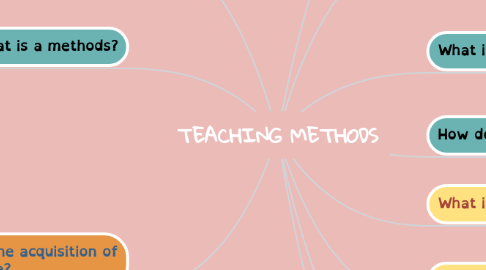
1. Components of a method:
1.1. Syllabus is the level at which theory is put into practice and at which choices are made about the content to be taught.
1.2. The theory of language adopted will affect the organization and selection of language content.
1.3. Different methods have different types of syllabi associated with them i.e. different ways of selecting and organising content.
2. What is a methods?
2.1. Is an overall plan for the orderly presentation of language material, no part of which contradicts, and all of which is based upon, the selected approach. An approach is axiomatic, a method is procedural. Within one approach, there can be many methods.
3. What is the acquisition of leanguage?
3.1. Is called the cognitive process by which human beings acquire the ability to communicate verbally using a natural language.
3.1.1. This development occurs at a critical period during the first years of life.
3.1.2. During the first three years of life is when the most intense period appears in the acquisition of speech and language skills. The brain will be predisposed to learning intensely until around 7 years of age.
3.1.3. Jean Piaget establishes two stages in the language acquisition process in children.
3.1.4. Vygotsky for whom internalized language is what constitutes thought, for Piaget thought is a symbolic mental activity that can operate with words but also with images and other types of mental representations.
3.2. Theories of learning and teaching
3.2.1. Various theories speak of human behavior, theories about learning try to explain internal processes when we learn, for example, the acquisition of intellectual skills, the acquisition of information or concepts, cognitive strategies, motor skills or attitudes.
3.2.2. Almost all theories have a philosophical-psychological support, they have been able to be adapted, in order to imitate their tendencies in the pedagogical field, thus being able to transfer them to the classroom, and putting them into practice.
